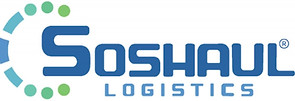Know the Basics of FMCSA CSA and SAFER
- Eric Carter, Dr. Sean Goffnett, Samantha Allen
- Feb 27, 2023
- 6 min read
Updated: Oct 30, 2023
Better SAFER Than Sorry.

While developing a carrier or shipper network it is important to take a look at the BASICs. Brokers and carriers have an interest in monitoring carrier safety and performance data. FMCSA’s Compliance, Safety, and Accountability (CSA) database and FMCSA’s SAFER Company Snapshot directory can be used by freight brokers to vet potential carriers. Carriers, on the other hand, can use FMCSA’s SAFER to impact the network they develop and the loads they receive as well as manage their safety scores. Brokers and freight agents will use SAFER to determine if a carrier has safety ratings that are on par with their company standards to limit the risk of potential crashes or compliance violations.
The CSA compiles data from roadside inspections and violations to give carriers a score in each BASIC category. The carrier score is compared to carriers with similar numbers of inspections to determine the BASIC safety rating. Carriers with satisfactory safety ratings will receive more opportunities to move freight because the rating indicates they are quality carriers and conduct business safely. It can also help keep a carrier’s insurance costs down. Carriers can also use FMCSA’s SAFER to research brokers and freight agents to avoid untrustworthy companies that may conduct illegal activities like double brokering.
What is the Federal Motor Carrier Safety Administration (FMCSA)?
The Federal Motor Carrier Safety Administration (FMCSA) is the government agency that regulates the trucking industry in the United States. The primary mission of the FMCSA is to reduce crashes, injuries, and fatalities involving large trucks. One area that the FMCSA regulates is the hours of service in trucking. Inspectors conduct roadside inspections on commercial motor vehicles and drivers to check that they are following Federal Motor Carrier Safety Regulations. If an inspector finds a serious violation, the driver will be issued an Out-of-Service (OOS) order and the vehicle will be shut down. These violations must be corrected before the driver or vehicle can return to service.
What Is Compliance, Safety, and Accountability (CSA)?
According to their website, Compliance, Safety, and Accountability, or simply CSA, is a data-driven program designed to improve safety and prevent commercial motor vehicle (CMV) crashes, injuries, and fatalities. The CSA system helps hold drivers and motor carriers accountable for safe on-road performance. CSA consists of three core components; the Safety Measurement System (SMS); interventions; and a Safety Fitness Determination (SFD) rating system to determine the safety fitness of motor carriers.
What is a CSA Score?
Every CDL driver operating under a USDOT number is given a CSA score consisting of roadside inspection data. To learn more about the importance of CSA Scores and how they are calculated, click here.
What is the FMCSA’s BASIC program all about? What is BASIC used for?
The driver fitness Behavior Analysis and Safety Improvement Category (BASIC) is a category that the FMCSA uses to determine how carriers rank compared to other carriers with similar safety event records. A safety event record consists of inspections, violations, and crashes that the carrier is part of. The Driver Fitness BASIC is based on federal regulations that require drivers to be physically and medically qualified to drive a commercial motor vehicle (CMV). This information is important because it details which drivers are unfit to perform the duties of operating a CMV.
What are the basics of BASIC?
There are seven categories used to determine a motor carrier’s safety performance and compliance relative to other carriers.
BASIC is drawn from roadside inspections, including driver and vehicle violations, crash reports from the last two years, and investigation results. Violations will negatively affect your company’s SMS results for two years. According to FMCSA, poor standings and poor performance, "may prioritize your company for an FMCSA intervention, ranging from warning letters to full Onsite Investigations that could result in an Out-of-Service Order (OOSO) or a change to your company’s safety rating."
Drivers need to understand that safety performance and compliance not only impact the company’s safety records but also impact the driver's safety record.
What Is FMCSA SAFER Company Snapshot?
The acronym SAFER stands for Safety and Fitness Electronic Record. The Company Snapshot is a concise electronic record of a company’s identification, size, commodity information, and safety record, including the safety rating, a roadside out-of-service inspection summary, and crash information. The FMCSA uses this data to prioritize carriers for interventions, concentrating on those that pose the highest safety risk.
The Company Snapshot feature allows users to search registered carriers and freight brokers by entering their MC number, DOT number, or company name. The results will provide a snapshot of the carrier's (or broker's) information.
How does a carrier use FMCSA SAFER?
A USDOT number is a unique identifier that allows information on a company’s safety information to be collected and monitored. Specifications vary by state, but carriers are required to have USDOT numbers when their vehicles have certain Gross Vehicle Weight Ratings. The types of information recorded by FMCSA include audits, inspections, compliance reviews, and any crash investigations. The FMCSA requires first-time applicants to use the Unified Registration System to register their businesses. After initial registration, carriers need to submit and update a Motor Carrier Identification Report (MCS-150 form) for FMCSA which verifies their presence (company snapshot) on SAFER is up to date. This form allows the FMCSA to gather updated information about a company and generate a score that is based on compliance, safety, and accountability. (CSA). The MCS-150 is required to be updated every 24 months unless there are changes to your operation like a change in address. Carriers can search FMCSA databases, register for a USDOT number, pay fines online, order company safety profiles, get printable registration forms, and find information about other FMCSA Information Systems.
Carriers also need to verify that they have a BOC-3 form uploaded on FMCSA. BOC-3 forms are used as a means for the public to have access to the carrier if there are any court proceedings. BOC-3 forms should also contain a list of designated process agents or representatives for the carrier that can accept court documents on behalf of the carrier. BOC-3 forms do not expire according to FMCSA but must be updated if a carrier changes their process agent jurisdiction.
The Owner-Operator Independent Drivers Association (OOIDA) is an international trade association that helps owner-operators and professional drivers with a variety of issues in trucking to create a better business climate and efficiency for all truck operators. OOIDA uses its knowledge of the industry and offers a range of coverage and policy options for businesses. OOIDA also has a permit and licensing group that handles form registration and annual updating for members. Currently, a two-year membership with OOIDA costs $50, and new or existing owner-operators and professional drivers are encouraged to join to increase the weight of OOIDAs voice. Aside from OOIDA, there are a variety of third-party providers, such as Apex Capital, that offer services to assist owner-operators with registration forms and annual updating for FMCSA.
Why does this matter?
To recap, the FMCSA established a method of scoring companies based on their compliance, safety, and accountability ratings. Carriers should place importance on updating and using the FMCSA systems because it ensures they are fully legal while on the road. Legality and compliance are crucial to a carrier’s reputation and often the FMCSA is the first-place customers will look for information on carriers. Being sure to update their information in a timely manner ensures there is no gap in their filings, which is important in establishing a clear history of the carrier’s reputation.
There are two major choices when it comes to starting your professional driving career – starting your own trucking business or working as a company driver. There are multiple ways to start your trucking business with different levels of investment, risk, pay, and support. It should be clear by now that it takes a definitive plan. If you feel drawn to the idea of starting your own trucking business, and if you feel you have the inner drive to drive, Soshaul can help! Please check out our free and for-purchase resources, templates, and in-depth courses available on our website.
If you or someone you know would like to learn more, share this blog with them! We cover a variety of topics related to starting, operating, and growing a trucking business as well as free resources, digital products, and comprehensive courses.
Ready to START, DRIVE, & ACCELERATE your trucking business? Check out our course here!

Interested in being notified when more free resources are available? Subscribe down below and you'll be the first to know!
Soshaul Logistics LLC and its affiliates do not provide tax, legal or accounting advice. This material has been prepared for informational purposes only, and is not intended to provide, and should not be relied on for, tax, legal or accounting advice. It is meant to serve as a guide and information only and Soshaul Logistics, LLC - Copyright 2023 - does not assume responsibility for any omissions, errors, or ambiguity contained herein. You should consult your own tax, legal and accounting advisors before engaging in any transaction or operation.




Comments